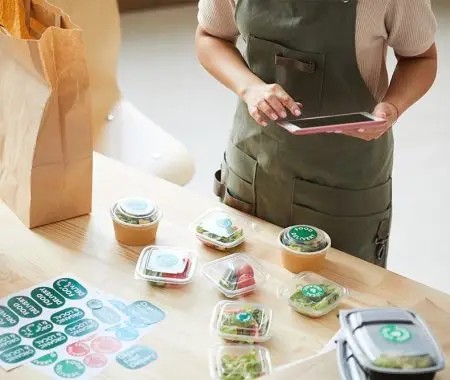When it comes to food labeling, there are a few things that F&B businesses need to keep in mind. Labels need to be clear and concise, providing all of the necessary information for the consumer, and most importantly compliant with their local market’s regulations. In addition, labels should be attractive and enticing, encouraging people to buy the product. Finally, labels must always be accurate and truthful.
The FDA has strict regulations for food labeling. However, there are different types of labels that can be used to provide additional information about your product. This blog will explore different types of food labels based on different markets worldwide and discuss how they can be used to improve your product’s marketing.
What are the different types of food labels that can be found on products in stores and restaurants?
Here is a brief overview of the most common types:
- FDA Standard Label: This type of label is required by the US Food and Drug Administration (FDA) for most packaged foods. It includes key information such as the product’s name, manufacturer, nutrition facts, ingredient list, and allergen warnings.
- FDA Tabular Label: This type of label is also required by the FDA for most packaged foods. However, it presents the nutrition information in a table format instead of the standard “Nutrition Facts” panel.
- FDA Linear Label: A linear label is the simplest type of label. It lists the ingredients in the order they are used, from most to least. This type of label is found on simple products with few ingredients.
- FDA Dual Column Label: This label has two columns of information. The left column lists the nutrients that are most important for people to limit in their diets. The right column lists the amounts of those nutrients per serving. This type of label is found on products that have more than one ingredient.
- UK Traffic Light Label: This type of label is voluntary and not required by the FDA. It uses a traffic light system (red, yellow, green) to indicate the nutritional value of a product at a glance. Green means the product is good for you, yellow means it is okay in moderation, and red means it should be eaten sparingly.
- EU Standard Label: This type of label is required by the European Union (EU) for most packaged foods. It includes key information such as the product’s name, manufacturer, nutrition facts, ingredient list, and allergen warnings. The label must also include a “Nutri-Score” rating system that grades the overall nutritional quality of the product on a scale from A to E.
- CFIA Compliant Label: This food label is based on Canadian regulations and must be bilingual, providing the nutrition facts information in both English and French.
- Australia & New Zealand Label: A label format based on Australia and New Zealand food Regulations (FSANZ).
- Simple Label: This type of label is not regulated by any food authority but can be used for restaurants that serve packaged foods or offer nutrition information on their menus. This is a simple label that shows customers the calorie count and macros (carbs, protein, fat) of what is in their meals.
See How FoodLabelMaker Can Help You
Food Label Maker offers nine different nutrition facts layouts and four different languages: English, French, Arabic, and Spanish; with many more formats and languages planned to be added along the way.
It can be tough to keep track of all the different food labels out there. But it’s important to understand what each one means, to make the best choice for your product label.
So, what’s the best food label? The answer is that there is no one-size-fits-all solution. Different types of labels can be more or less effective depending on your market, target audience, and the type of product you’re selling.
If you’re looking for a way to make your food packaging more informative and engaging for consumers, consider using a traffic light label or a restaurant label for example. And if you’re unsure about which type of food label to use, the standard FDA label is always a safe bet.



